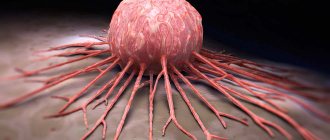General information. Copper. Cu.
Copper is an element of Group I of the periodic table; at. n. – 29, at. m. – 64. The name comes from lat. Cuprum – Cyprus. Copper has been known since ancient civilizations.
Copper is a malleable and ductile metal of a reddish color, with high electrical and thermal conductivity. Copper is resistant to air and water. Natural sources of copper are the minerals bornite, chalcopyrite, malachite, and native copper is also found.
In industry, copper compounds are used to make electrical wires, coins, pipelines, heat exchangers, etc.; alloys of copper with other elements (bronze, etc.) are widely known.
In medicine, copper sulfate is used as an antimicrobial and cauterizing agent. Preparations of various copper salts are used externally for washing and douching; in the form of ointments for inflammatory processes of the mucous membranes; in physiotherapy. Copper in combination with iron is used in the treatment of children with hypochromic anemia.
Copper-containing preparations and dietary supplements are also used in the treatment and prevention of diseases of the musculoskeletal system and hypothyroidism. The use of a copper intrauterine device as a means of contraception has become widespread.
The method of disinfecting pool water by saturating it with silver and copper ions without the use of chlorine using the Silvertronix automation system allows you to reliably protect water from pathogens for a long time even when the filtering equipment is turned off; in addition, this method does not have a detrimental effect on bacteria and viruses to the development of sustainable immunity.
Physiological role of copper
Copper enters the body mainly through food. Some vegetables and fruits contain from 30 to 230 mg% copper. A lot of copper is found in seafood, legumes, cabbage, potatoes, nettles, corn, carrots, spinach, apples, and cocoa beans.
Up to 95% of the copper entering the body is absorbed in the gastrointestinal tract (with its maximum amount in the stomach), then in the duodenum, jejunum and ileum. Bivalent copper is best absorbed by the body. In the blood, copper binds to serum albumin (12-17%), amino acids - histidine, threonine, glutamine (10-15%), transport protein transcuprin (12-14%) and ceruloplasmin (up to 60-65%).
It is believed that the optimal rate of copper intake into the body is 2-3 mg/day. Copper deficiency in the body can develop with insufficient intake of this element (1 mg/day or less), and the toxicity threshold for humans is 200 mg/day.
Copper is able to penetrate into all cells, tissues and organs. The maximum concentration of copper is noted in the liver, kidneys, brain, and blood, but copper can also be found in other organs and tissues.
The liver plays a leading role in copper metabolism, since it synthesizes the protein ceruloplasmin, which has enzymatic activity and is involved in the regulation of copper homeostasis.
Copper is a vital element that is part of many vitamins, hormones, enzymes, respiratory pigments, participates in metabolic processes, tissue respiration, etc. Copper is of great importance for maintaining the normal structure of bones, cartilage, tendons (collagen), elasticity of the walls of blood vessels, pulmonary alveoli, skin (elastin). Copper is part of the myelin sheaths of nerves. The effect of copper on carbohydrate metabolism is manifested by accelerating the processes of glucose oxidation and inhibiting the breakdown of glycogen in the liver. Copper is part of many important enzymes, such as cytochrome oxidase, tyrosinase, ascorbinase, etc. Copper is present in the body's antioxidant defense system, being a cofactor for the enzyme superoxide dismutase, which is involved in neutralizing oxygen free radicals. This bioelement increases the body's resistance to certain infections, binds microbial toxins and enhances the effect of antibiotics. Copper has a pronounced anti-inflammatory property, softens the manifestations of autoimmune diseases (eg, rheumatoid arthritis), and promotes the absorption of iron.
Toxic dose for humans: more than 250 mg.
Lethal dose for humans: no data.
Copper (Cu) blood, urine or hair
Copper in the human body exists in two states – Cu1+ and Cu2+; and an easy transition between these forms provides the redox properties of this element. The main amount of copper is found in the body in the form associated with peptides, proteins, and other organic substances, while the concentration of free copper inside cells is extremely low. Copper metabolism mainly occurs in the liver, where this element is incorporated into enzymes and other proteins. From the liver, more than 90% of copper is transferred to peripheral tissues as part of ceruloplasmin, the main copper-containing enzyme in the human body. Copper is a catalytic component of a number of enzymes and is also an important structural component of many proteins. Most of the proteins containing copper are located on the surface of cell membranes. Copper-containing enzymes protect cells from the harmful effects of free radicals, are an important part of intracellular energy processes, and form bonds between collagen and elastin fibers. Ceruloplasmin and some other copper-containing enzymes are involved in iron metabolism. Copper-containing proteins are involved in gene transcription processes. Copper content in foods can vary depending on the cooking process and several other factors. A large amount of copper is found in meat, a lot of this element is in seafood, nuts, cereals, cocoa and bran. The smallest amount of copper is found in cow's milk, as well as in white meat. Congenital disorders of copper metabolism cause severe pathologies. These include: Konovalov-Wilson disease - a violation of copper transfer, due to the impossibility of including it in the composition of ceruloplasmin, which is accompanied by the accumulation of copper in the tissues of the body and intoxication, as well as Menkes syndrome - a genetically determined violation of the absorption of copper in the intestinal lumen. Copper deficiency is manifested by neutropenia, anemia that is not sensitive to iron supplements, osteoporosis, various joint and bone lesions, decreased skin pigmentation, cardiac dysfunction and a variety of neurological symptoms. Impaired absorption of copper is observed in some diseases of the small intestine, as well as in diseases associated with an increase in the content of cadmium and zinc ions that compete with copper. Copper deficiency is often observed in infants (especially premature infants) who are fed copper-deficient milk. Poisoning with copper salts (due to the action of fungicides and some copper-containing solutions) is manifested by nausea, vomiting, diarrhea, headaches and abdominal pain. With copper intoxication, jaundice and hemolytic shock may develop due to liver damage.
To assess copper metabolism in the body, it is most advisable to conduct a study of copper content in the blood plasma in combination with an analysis for ceruloplasmin, although with minor changes these studies may not be sufficiently informative. The determination of copper excretion in urine is used much less frequently for these purposes. An analysis of copper content in hair is carried out in some cases to diagnose copper intoxication or a metabolic disorder of the element.
Reduced copper content in the body
Causes of copper deficiency:
- insufficient intake;
- long-term use of corticosteroids, non-steroidal anti-inflammatory drugs, antibiotics;
- dysregulation of copper metabolism.
The main manifestations of copper deficiency:
- inhibition of iron absorption, impaired hemoglobin formation, inhibition of hematopoiesis, development of microcytic hypochromic anemia;
- deterioration of the cardiovascular system, increased risk of coronary heart disease, formation of aneurysms in the walls of blood vessels, cardiopathy;
- deterioration of bone and connective tissue, impaired bone mineralization, osteoporosis, bone fractures;
- increased predisposition to bronchial asthma, allergic dermatoses;
- degeneration of the myelin sheaths of nerve cells, increasing the risk of developing multiple sclerosis;
- hair pigmentation disorder, vitiligo;
- enlarged thyroid gland (hypothyroidism, thyroxine deficiency);
- delayed sexual development in girls, menstrual dysfunction, decreased libido in women, infertility;
- development of distress syndrome in newborns;
- lipid metabolism disorders (atherosclerosis, obesity, diabetes);
- suppression of immune system functions;
- accelerating the aging of the body.
Testing of narcotic substances in urine using rapid tests
Parents watch!
Rapid tests are an additional chromatographic immunological examination for the qualitative detection of narcotic substances in urine. These samples provide a preliminary analytical result. A more specific test that supports the screening examination is the chemical method - gas chromatography/mass spectrography (GC/MS).
AMP- strip. Amphetamine
Amphetamine is part of a class of powerful sympathomimetic agents that are used for therapeutic purposes. Amphetamines react chemically with human catecholamines such as adrenaline (epinephrine) and naradrenaline (norepinephrine). A sharp increase in dose leads to increased activity of the central nervous system and causes euphoria, alertness, decreased appetite, as well as a feeling of increased energy and strength. The cardiovascular system responds to amphetamine by causing increased blood pressure and arrhythmia. An even more dramatic overdose of amphetamine can cause anxiety, paranoia, hallucinations and psychotropic behavior. The active effect of amphetamine lasts 2-4 hours, about 30% is excreted unchanged in the urine.
AMF test strips are an accelerated urine screening test that can be used without additional instruments. Reflects an excess of amphetamine levels of 1000ng/ml
Met strip. Methamphetamine
Methamphytamine is a stimulant and addictive drug. Chemically closely related to amphetamine, but produces a stronger effect on the central nervous system. Produced in illegal laboratories. Taken orally, in a gas mixture and narenterally. A sharp excess of the dose leads to increased activity of the central nervous system and causes euphoria, alertness, decreased appetite, as well as a feeling of increased energy and strength. The cardiovascular system's response to metaphenamine causes an increase in blood pressure and arrhythmia. Even more severe overdoses can cause anxiety, paranoia, hallucinations and psychotic behavior and ultimately lead to depression and exhaustion. 10-20% is released unchanged. Detected in urine within 3-5 days. Exceeding the dose of 1000 ng/ml reflects a positive effect.
MDMA strip. MDMA
MDMA was first synthesized in 1914 by a German pharmaceutical company to treat obesity. The drug caused side effects - sweating and muscle tension. The drug is not a stimulant, but is similar to amphetamines and can increase blood pressure and heart rate. For some, it causes difficulty focusing, blurred vision, and light sensitivity. The most common effect in people taking MDMA is increased jaw clenching. A positive result in urine is reflected when it exceeds 500 ng/ml.
BAR- delice. Barbiturates.
Barbiturates are CNS depressants. They are used therapeutically as a sedative, hypnotic and anticonvulsant. Barbiturates are primarily used orally in capsule or tablet form. The effect is the same as with alcohol intoxication. Chronic use of the drug leads to tolerance and physical dependence. Use at a dose of 400 mg/day for 2-3 months causes a clinically significant degree of physical dependence. Withdrawal syndromes occur during the period of drug withdrawal and the syndromes may be sufficient to cause death. 5% is withdrawn unchanged. The period of determination in urine is 4-7 days.
BAR-delice accelerated urine screening test. Reflects the content of barbiturates exceeding the borderline level.
TNS- delice. Tetrahydrocannabinol.
THC (Δ9-tetrahydrocannabinol) is the primary active constituent of cannabinoids (marijuana). When smoked or taken orally, it produces a euphoric effect. In recipients, short-term memory is weakened and learning is inhibited, and attacks of confusion and anxiety are observed. Long-term use of this substance can affect the psyche, causing mental disorders. The maximum effect from smoking marijuana appears within 20-30 minutes. The duration of action is 90-120 after a cigarette. High levels of metabolites in urine are detected within a few hours after ingestion and last up to 3-10 days after smoking. A positive result occurs when the dose in the urine exceeds 50 ng/ml.
MOP- delice. Morphine.
An opioid analgesic comprises a large group of substances that control pain by reducing central nervous system activity. High doses of morphine cause greater tolerance and physiological dependence and can lead to drug abuse. Morphine is excreted unmetabolized and is a metabolite of codeine and heroin. Detected in urine for several days after administration when the level exceeds 300ng/ml.
SOS- delice. Cocaine.
Cocaine is a potent central nervous system stimulant and local anesthetic. Initially leads to increased energy and restlessness, which ultimately leads to tremors, hypersensitivity and spasms. Cocaine in most cases causes fever, unresponsiveness, difficulty breathing and unconsciousness. Administered by inhalation, intravenously. It is excreted quickly in the form of benzoylegonine, which is the main metabolite of cocaine, has a greater biological vitality (5-8 hours) compared to cocaine (0.5-1.5 hours), and can be detected 24-48 hours after cocaine administration.
How to carry out the analysis? All rapid tests are performed using a urine sample. Analysis of urine:
The urine sample should be collected in a sterile and dry container. Urine collection is performed at any time of the day.
Increased copper content in the body
An increased content of copper compounds in the body is very toxic to humans.
Causes of excess copper:
- excessive intake into the body (inhalation of vapors and dust of copper compounds in production conditions, household intoxication with solutions of copper compounds, use of copper utensils);
- dysregulation of copper metabolism.
The main manifestations of excess copper:
- functional disorders of the nervous system (memory impairment, depression, insomnia);
- when inhaling vapors, “copper fever” may occur (chills, high temperature, drenching sweat, cramps in the calf muscles);
- exposure to dust and copper oxide can lead to lacrimation, irritation of the conjunctiva and mucous membranes, sneezing, burning in the throat, headache, weakness, muscle pain, gastrointestinal disorders;
- dysfunction of the liver and kidneys;
- liver damage with the development of cirrhosis and secondary brain damage associated with a hereditary disorder of copper and protein metabolism (Wilson-Konovalov disease);
- allergic dermatoses;
- increased risk of developing atherosclerosis;
- hemolysis of red blood cells, the appearance of hemoglobin in the urine, anemia.










